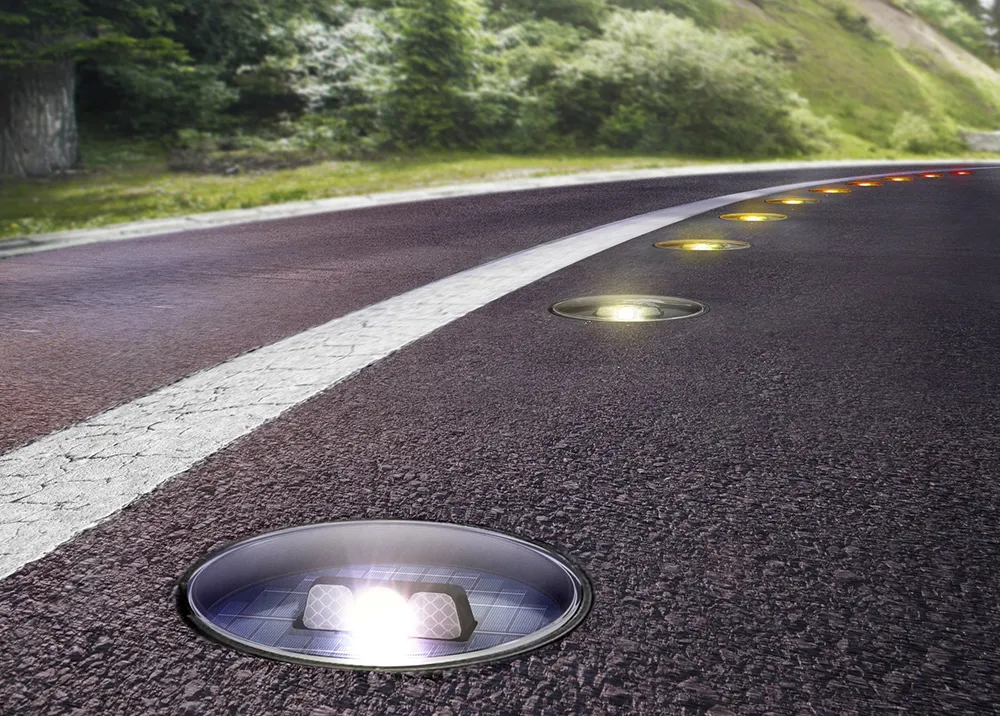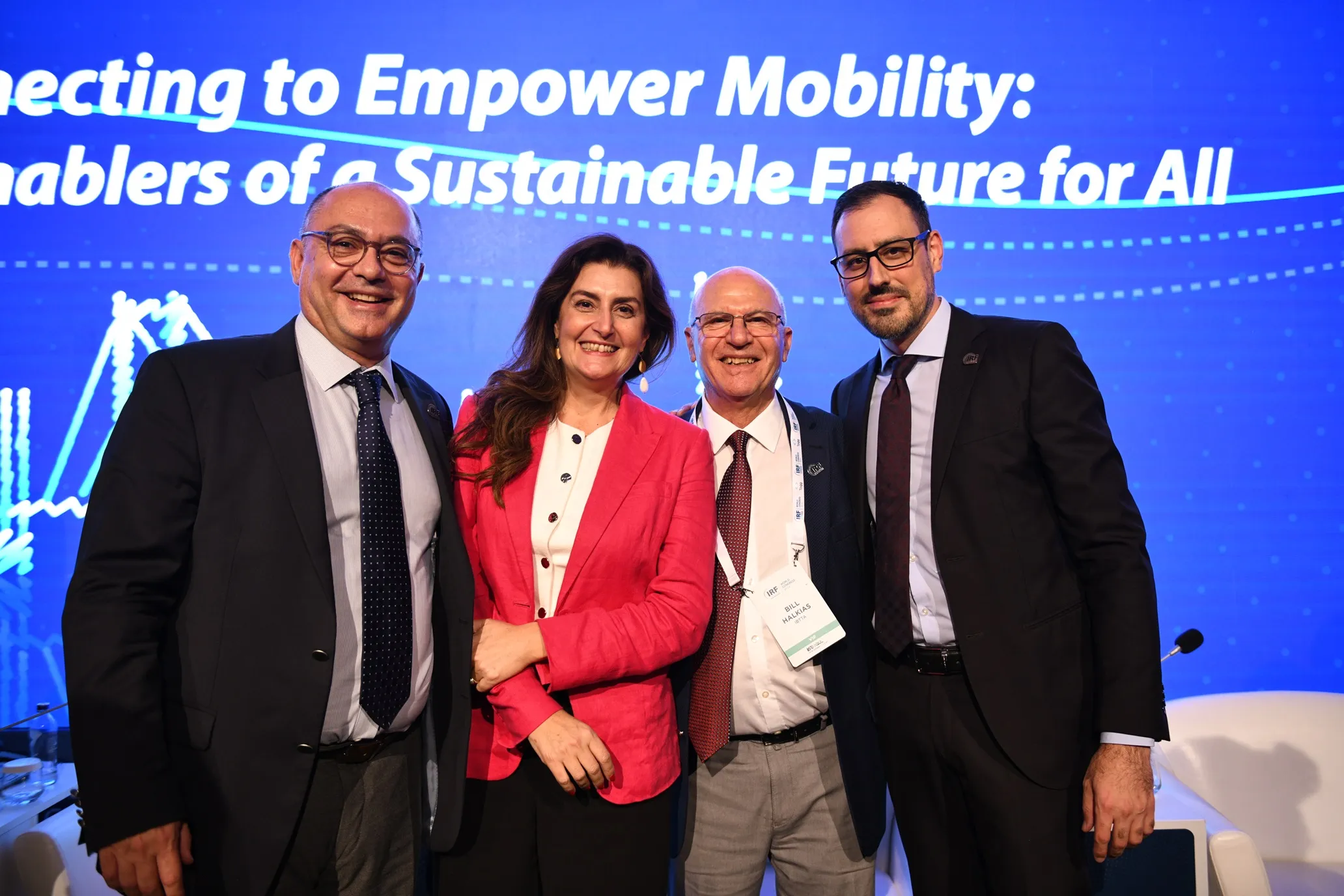
At the COP21 meeting in Paris last December, almost 200 nations agreed to reduce greenhouse gas emissions in an effort to keep the rise in global temperatures to 2°C) compared with pre-industrial levels.
The transportation sector is a major contributor to the production of CO2, one of the main greenhouse gases causing climate change, as well as other environmental damage. This is not only because of the fossil fuel used in the transport sector contributing between 14 and 20% of CO2 emissions but also the damage to the local environment and the materials used in creating the transport infrastructure.
Now, the
Industrialist Ray Anderson was known as ‘the world’s greenest CEO’ for his environmentally progressive stance on industrial ecology and sustainability. As founder and chairman of carpet tile manufacturer Interface, he introduced a ‘Mission Zero’ promise to eliminate any negative impact his company has on the environment by 2020. This was to be done through the redesign of processes and products, the pioneering of new technologies, reducing or eliminating waste and harmful emissions while increasing the use of renewable energy and materials.
Following Anderson’s death in 2011, the Ray C. Anderson Foundation has continued his work on environmental matters including a vision of the world’s first sustainable highway - ‘The Mission Zero Corridor Project’ in West Georgia, which has been renamed as ‘
Innovia Technology, a UK-based company, has been appointed to help create the travel corridor and rethink the purpose and function of this infrastructure to generate social, environmental and economic value. Its initial report evaluated emerging technologies being trialled across the world, selecting those with the greatest potential for achieving The Ray’s zero impact vision.
Andy Milton, project leader with Cambridge-based
While acknowledging that a lot of technology is happening inside the vehicle, this project’s focus is on the environmental impact and safety of the road. The current configuration has some 20 to 30ft of run-off area either side of the carriageway from which all trees have been removed. “If autonomous cars don’t crash, there will be no need to have large run-off areas or even crash barriers.
Those run-off areas could be replanted with trees to sequester more carbon while the steel, concrete and man-hours saved by not installing crash barriers would be substantial – albeit these are long-term aims.”
In the shorter term he says authorities could reduce the amount of mowing on the embankments, run-off areas and medians. This would both save cost and encourage biodiversity. They might also consider replanting trees or installing solar panels behind existing barriers. Not only would these have the environmental benefits outlined above, they would also reduce noise levels for nearby residents.
Supporting low carbon transport systems is a given for the project and the addition of new lanes could provide an opportunity to test prototype systems for charging electric vehicles on the move. Another suggestion is solar-powered charging turnouts that would charge electric vehicles to 80% in the 20 minutes it takes the driver to drink a coffee. Through the use of connected vehicle technology the driver would know whether there is a space at the next turnout or if they should carry on to the one after.
Other forms of renewable energy would also be supported in the shape of biogas created by anaerobic digestion that could be used to power buses and commercial vehicles. Milton says the ultimate aim must be to enable drivers of electric and other low-emission vehicles to travel from Atlanta to Montgomery without range anxiety.
Of more immediate benefit he says: “By utilising connected vehicle technology, when one car drives over a pothole, it could upload that information to the cloud and all the other connected and autonomous vehicles will, if possible, avoid the same pothole. So there will be less urgency to repair the roads and potholes won’t grow as quickly as they do currently.”
It is common knowledge that autonomous vehicles could increase road capacity as they could safely follow each other more closely than human drivers and would be less likely to deviate from their lane. This means that what is currently a three-lane highway could have four lanes of autonomous or highly automated vehicles.
Milton takes this one step further saying that the additional space could be used to create a truck-only lane that would allow the platooning of autonomous trucks with all the efficiency gains that could provide. This would also enable the load-bearing part of that lane to be reinforced to withstand the heavy vehicles while the depth of sub-base across the remaining roadway could be reduced to minimise earthworks and cut material usage.
“This is just one of many examples where vehicle technology will have an impact on the road and other infrastructure, so it is important that they are considered together rather than separately,” says Milton.
In addition, autonomous vehicles would not require street lighting while solar-powered road studs can help guide the drivers of normal cars and flash or change colour to warn of hazards ahead. Removing the need for street lighting would result in big savings in materials use and infrastructure spending and, to a lesser extent, energy consumption (as low-energy lighting can already cut bills by up to 80%).
“A lot of these changes can save money,” Milton says.
In terms of monitoring, Innovia is recommending creating baseline measurements of current levels of pollution and road traffic incidents by installing a network of sensors. The use of a self-healing mesh network would allow sensors to be connected or removed as required. There can also be an environmental angle to instrumentation and sensors and Milton cites Solar Owl, a solar powered sound sensor with an integrated microphone and transmitter developed by UK companies Sentec and PolySolar.
The sensor provides real-time data on outdoor noise levels, can be clipped to a roadside post and requires no maintenance.
Another, far from new, suggestion for The Ray is bioswales – a centuries-old system of shallow drainage ditches that could be used to carry the runoff water from the road surface. These are filled with vegetation or compost which slows the water flow and traps pollutants such as heavy metals, rubber and oil and should be designed to cope with a ten-year flood event.
Looking ahead again to long-term solutions, is the use of monitoring drones or autonomous vehicles that could carry medical supplies and perhaps a screen to provide medical advice in the event of a crash. Another fledgling concept is that of an asphalt ‘road on a roll’, or pre-fabricated slabs of concrete, which could be put into position very rapidly. “If, for instance, there is less wear on dedicated car lanes, the durability of the road surface may be less important than the ability to replace it very quickly when a defect does occur,” suggests Milton.
Environmentally friendly recycled asphalt made with hog manure binders are currently being marketed by the Bio-Adhesive Alliance in North Carolina and concrete that sequesters carbon is also under development. Hog manure is a by-product of farming, a potential pollutant (if the storage ponds get flooded) and gives off a large amount of methane which Milton points out has 25 times more global warming potential over a 100 year period than CO2.
While onboard tyre pressure monitoring is becoming a legal requirement, in the short-term the inclusion of drive-over tyre monitoring systems such as the one being marketed by
“Each year a number of crashes and fatalities can be traced to tyre problems and having the correct inflation pressures reduces fuel consumption and tyre wear. But checking and inflating tyres is a tedious task which is easily overlooked by drivers, so anything that makes this easier and alerts drivers to potential tyre problems has to be a good thing.”
Interestingly, what is not being considered for The Ray is wind generation. “Wind power is one of the most promising of the renewable energy sources but not on this project because there is just not that much wind in Georgia,” says Milton. Equally, he is not suggesting the use of piezo-electric roadways (as ‘realistic projections’ show they would create little electricity) or solar roadways. He says such installations create a host of challenges (load bearing for trucks, drainage, dirt, cost…) and that solar panels to the sides of the road would be more efficient as well as easier to install and maintain.
“Good solar installations are now nearing cost parity with grid electricity but if we make the installation and maintenance more difficult, that cost competitiveness is lost. And land is not currently the limiting factor for solar installations – it is not as though we have installed solar panels on all the available land and need to squeeze more in on the road itself.”
Atmospheric carbon capture, where systems by the side of the road capture and remove the carbon emitted by the vehicles, was also considered but discounted. “It is technically possible but the cost and energy needed is too high.”
The Foundation is currently looking for partners to start work on creating the new highway and decisions on what will be included in the build are expected later this year.










